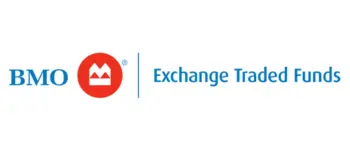These Gold ETFs Help Canadians Hedge Against Uncertainty
Key takeaways
Gold as a Safe Haven – These ETFs provide exposure to gold, a traditional hedge against inflation and economic uncertainty.
Diverse Approaches – Some ETFs hold physical gold, while others invest in gold miners or use covered call strategies.
Currency Impact Matters – Hedged vs. non-hedged options allow investors to manage exposure to USD fluctuations.
One ETF I like way better than the ones on this list.Canadian exchange-traded funds (ETFs) revolutionized passive investing in Canada. Forget about the hassle of picking individual stocks. Now, a laid-back strategy with ETFs works wonders.
ETFs are also an excellent way to gain exposure to particular industries without having to pick individual stocks.
A piece of investment advice I often give (an investment strategy used at your discretion) is that every portfolio should have some exposure to gold. Gold has long been considered a defensive investment and helps insulate your portfolio against various market conditions, potential bear markets, or market volatility.
Some investors buy bonds, or even Canadian bond ETFs, for stability, which isn’t a wrong decision either. But in a rocky market in terms of interest rates, bonds will be more volatile.
But if you’re looking for exposure to gold without having to own a producer, streamer, or the precious metal directly, you may look to an exchange-traded fund. I’d imagine that is exactly why you’re on this post.
Lets dive into the best gold ETFs in Canada right now. I’ll try to mix this list up a bit, having a wide variety of ETFs that give investors exposure to different parts of the industry.
So what is the best gold ETF in Canada moving forward in 2025?
Direct gold exposure with CAD hedging
iShares Gold Bullion ETF (CAD-Hedged) (TSX:CGL)

This ETF holds physical gold and uses currency hedging to neutralize fluctuations in the Canadian dollar relative to USD. It aims to provide investors with a pure gold price return in CAD terms.
Direct gold exposure without CAD hedging
iShares Gold Bullion ETF (Non-Hedged) (TSX:CGL.C)

Similar to CGL, this ETF holds physical gold but does not hedge currency risk. This means returns are impacted by both gold prices and CAD/USD fluctuations.
Exposure to global gold mining stocks
iShares S&P/TSX Global Gold Index ETF (TSX:XGD)

This ETF tracks the S&P/TSX Global Gold Index, offering diversified exposure to gold mining companies worldwide. It provides leverage to gold price movements through miners’ profitability.
High-growth junior gold miners
BMO Junior Gold Index ETF (TSX:ZJG)

This ETF focuses on small-cap gold mining companies, which offer high growth potential but come with increased risk. It tracks the Solactive Junior Gold Miners Index.
Gold exposure with income generation
Horizons Gold Yield ETF (TSX:HGY)

This ETF provides gold exposure while generating income through covered call options on gold stocks. It’s designed for investors who want exposure to gold with some cash flow.
Direct physical gold exposure
BMO Gold Bullion Series Units ETF
(TSE: ZGLD)

Launched on March 8, 2024, the BMO Gold Bullion ETF (ZGLD) invests directly in unencumbered gold bullion, specifically 400 troy ounce international bars. The fund seeks to mirror the performance of gold bullion prices, providing investors with a straightforward means to gain exposure to gold without the complexities of purchasing and storing physical gold.
Gold is regaining favor again, and is one of the best performing assets over the last few years
Before the COVID-19 pandemic, gold had fallen out of favour, trading in a 5+ year bear market with prices hovering anywhere from $1000-1200 USD an ounce. Now? government spending and higher inflation is causing a surge in gold prices, and many predictions during the pandemic of $3000/oz gold are now coming true.
So where should one invest? Investing in individual gold producers can be difficult, risky, and not suggested for those with a low-risk tolerance. There are a plethora of small, mid, and large-sized gold stocks, and it’s not easy picking the winners.
As we’ve seen in the past, investors who buy the wrong gold producer or explorer can lead to significant losses. Gold companies set up for long-term success are a rarity, and most investors lose money when they get into precious metals or the companies that mine them.
Investing in a Canadian gold ETF greatly increases your exposure to the precious metal while minimizing your risk.
Ultimately, the performance of these ETFs will depend on the price of gold, but for investors looking for lower risk, an ETF inherently won’t be as volatile as buying individual stocks on the stock market.
Keep in mind, however, that with any ETF, you should be looking for a blend of low cost and high returns. Mediocre ETFs with high expense fees can eat into returns over the long term and cause you to underperform the market significantly.
